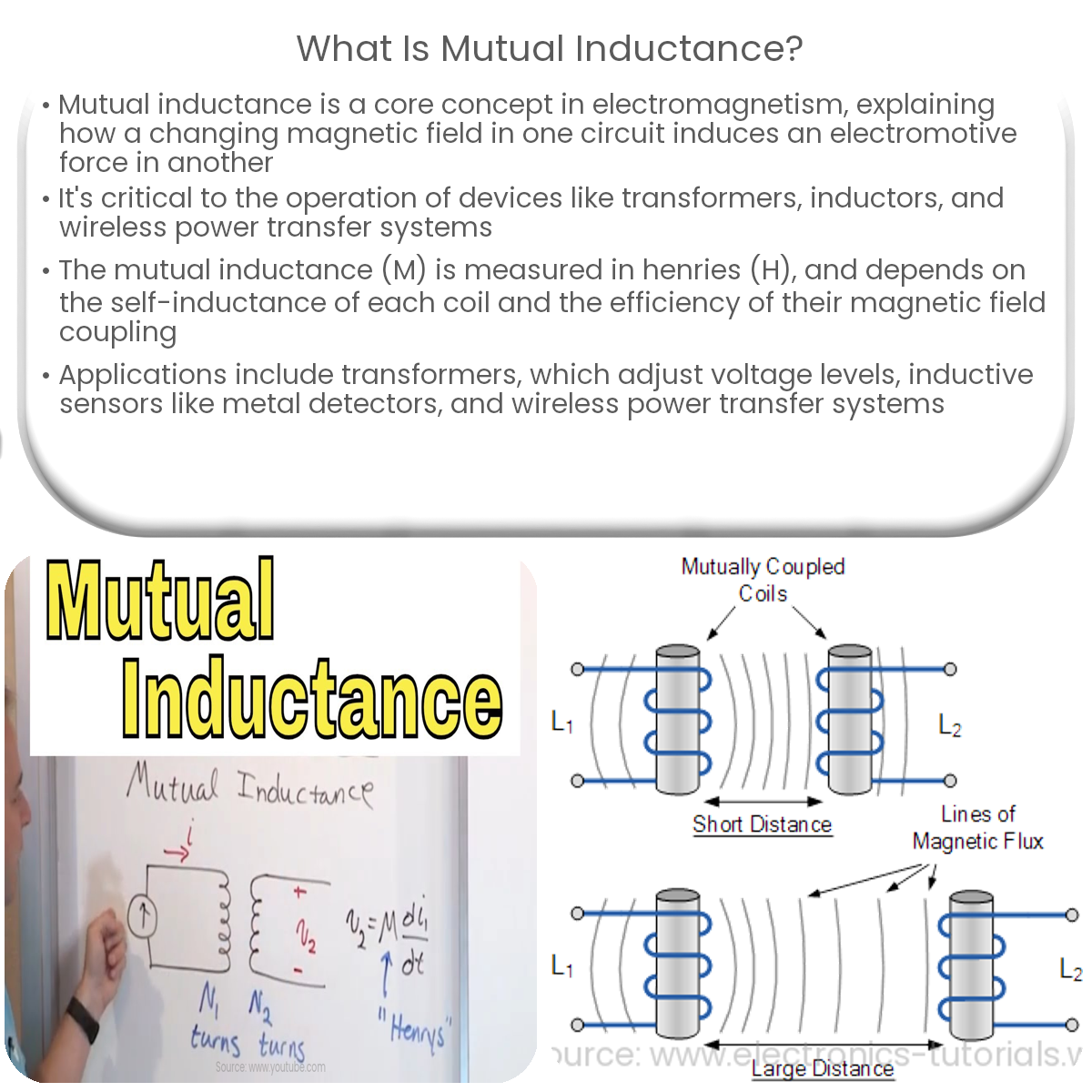Mutual inductance occurs when a change in current in one coil induces voltage in a nearby coil through the interaction of their magnetic fields.
Mutual Inductance
Mutual inductance is a fundamental concept in electromagnetism, describing the interaction between two electrical circuits or coils. It occurs when a change in current in one coil, called the primary coil, induces a voltage in another nearby coil, known as the secondary coil, through the magnetic field generated by the primary coil.
Understanding Mutual Inductance
When a current flows through a coil, it creates a magnetic field around it. If another coil is placed within the vicinity of the first coil, the magnetic field generated by the first coil will interact with the second coil. This interaction induces a voltage in the second coil, which is the basis of mutual inductance. The amount of voltage induced in the second coil depends on the rate of change of the magnetic field and the number of turns in the coil.
Factors Affecting Mutual Inductance
Several factors influence the mutual inductance between two coils, including:
- Distance between coils: As the distance between the coils increases, the mutual inductance decreases, as the magnetic field from the primary coil has less effect on the secondary coil.
- Number of turns: The more turns in the coils, the greater the mutual inductance.
- Coil orientation: The mutual inductance is maximized when the coils are aligned with their axes parallel to each other and minimized when their axes are perpendicular.
- Core material: The presence of a magnetic material, such as iron, in the core of the coils increases the mutual inductance by concentrating the magnetic field lines.
Applications of Mutual Inductance
Mutual inductance plays a critical role in various electrical devices and applications, such as:
- Transformers: Mutual inductance is the fundamental principle behind transformers, which are used to transfer electrical energy between circuits through magnetic fields. Transformers use mutual inductance to step up or step down voltage levels.
- Inductive sensors: Devices like metal detectors and proximity sensors utilize mutual inductance to detect changes in the magnetic field caused by nearby objects.
- Wireless power transfer: Mutual inductance is a key factor in inductive coupling, which enables wireless power transfer between coils without physical contact.



